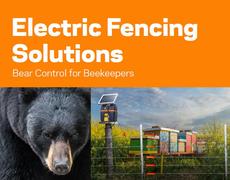The least tern is a small bird, an endangered species that causes some big problems because it likes to nest in hostile environments. Protecting them from predators usually means taking some drastic steps. About 10 years ago, the folks at Vandenberg Air Force base, located on a rugged stretch of the California coast about half way between Los Angeles and San Francisco, wanted to find a better way to protect the bird from marauding coyotes.
Vandenberg Air Force Base is headquarters for the 30th Space Wing and home to the Western Launch and Test Range. The Test Range begins at the coastal boundaries of Vandenberg and extends westward to the Marshall Islands, including sites in Hawaii on Oahu and Molokai.
The 30th Space Wing at Vandenberg Air Force Base, Calif., is responsible for all Department of Defense space and missile launch activities on the West Coast. All U.S. satellites destined for near polar orbit are launched from Vandenberg.The Wing supports West coast launch activities for the Air Force, Department of Defense, National Aeronautics and Space Administration, and various private industry contractors. The wing also supports Force Development and Evaluation of all intercontinental ballistic missiles.
Oh, yeah. It’s also serious about protecting a little 3 ounce bird.Jon Francine, a biologist with SRS Technologies, a high tech engineering firm that does a lot of work for the Department of Defense, said coyotes love to attack these ground nesting birds and feast on their eggs and fledglings. It only takes them a few days to wipe out an entire generation of terns.
Francine polices one of California’s most rugged sections of coast line because the Air Force, facing growing pressure from environmentalists to protect endangered species on its bases, asked SRS Technologies to help solve the problem.
“One solution is to try to shoot the coyotes but you’d have to kill about 70% of them over a five year period to get rid of them,” Francine explained. “A better solution is to find some way to keep them from getting to the nests.”
SRS built a power fence around the nesting site with design help from Gallagher. It’s short, only about a half mile long, ending at the cliffs on the coast. It’s a sturdy 10 wire fence built to withstand particularly harsh conditions. “It’s cold, wet and foggy here most of the time,” said Francine.
“We tried powering the fence with solar powered energizers for years but fog can block the sun for 30 or 40 days sometime. We finally convinced the military to run a line out to the fence so we could have a more reliable, hard-wired source of electricity,” said Francine as he described the difficulties he faced.
The fence has some unique maintenance problems. Several times a year Francine has to wash down the wires to get rid of the salt that collects on them. “Salt gets into the connections, causing a big voltage drop,” he said. Even with that kind of care, corrosion still eats away at the wire and he has to “restring” the fence every two years.
The fence works, stopping coyotes from entering the nesting grounds without the need to take more drastic measures. “Once we put it up, the predator problem was essentially over,” said Francine.
Please order online 24/7 or call VALLEY FARM SUPPLY at 717-786-0368





